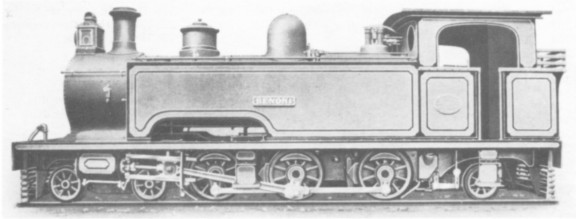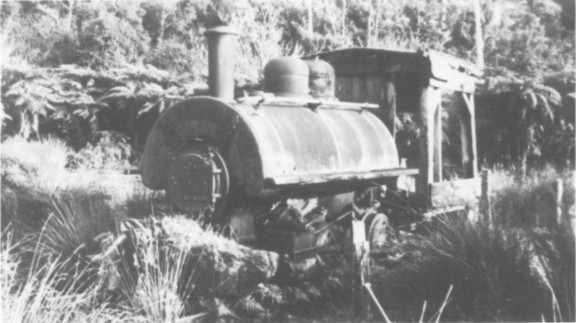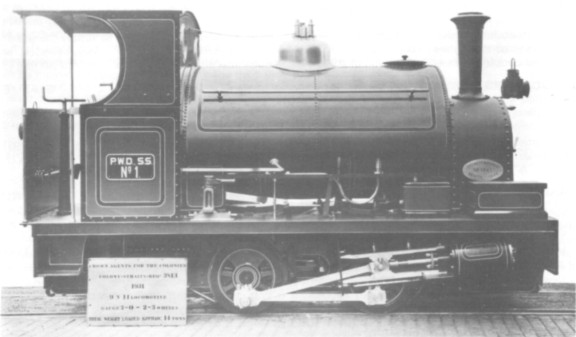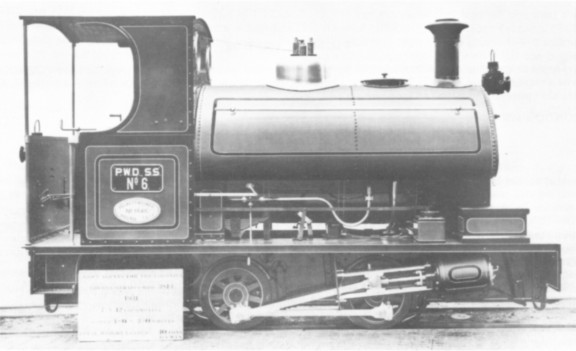| THE INDUSTRIAL RAILWAY RECORD |
© JUNE 1971 |
![]()
INDUSTRIAL LOCOMOTIVES OVERSEAS (10) NEW ZEALAND
I would like to make a few comments on my article in RECORD 26. On page 98 (line 8) the Editor added "(abattoirs)" after my reference to the "killing works". In this country there is a subtle difference between these words. The abattoir is usually a very small plant where the meat is killed for local consumption, but the large factories where the meat is killed for export are always called freezing works, I referred to them as "killing works", as I did not think British readers would know what a freezing works was. Obviously the name comes from the fact that all export meat has to be frozen or chilled for transport.
In the centre caption on page 100 "Kangarve" should read "Kangarue"; at least this is how I’ve always seen it printed until the other day on the Ordnance Survey I noticed it was spelt "Kangaroo". On page 102, line 2, "Manaru" should read "Mamaku". The only other correction concerns the reference an page 110 (line 35) to Hawthorn Leslie 3663. Enquiries made by Geoffrey Horsman and confirmed by Les Chariton show that a locomotive named BENONI was one of a batch of three ordered in May 1902 by the New Kleinfontein Co Ltd of Benoni, South Africa, to whom it was delivered in 1903 as Hawthorn Leslie 2557. The maker’s photograph reproduced here is the same as one which appeared in a Hawthorn Leslie catalogue. Some years later an identical photograph, but retouched for background and with the words ‘tHAI RAILWAY BOARD" above the nameplate "BENONI", was in circulation in New Zealand. It seems possible that Hawthorn Leslie supplied the retouched photograph to the Ohai Railway Board when quoting, or when No.3663 was built. The give-away is the vacuum brake pipe (shown clearly an the photograph), for this type of brake has never been used in New Zealand.

Since the article was written, I understand that Wilson’s (N.Z.) Portland Cement Ltd has received a second Drewry diesel. The contractors, Downer & Associates, have three four-wheel Goodman battery electrics on their 3ft 6in gauge line at Tokaanu, together with five Baguley-Drewry 0−4−0 diesels (works numbers 3650-3654 of 1968). Of the locomotives listed in Appendix 3 (page 113) Bagnall 1857 and Barclay 1270 have been preserved, while Dübs 885 is back in service at Rotowaro in place of Peckett 1630, which is now standby, The future of Sharp Stewart 4270 is uncertain, as the mine at Kaitangata was due to close in September 1970.
| GREYMOUTH, NEW ZEALAND |
BRIAN WHEBELL |
BRUCE BAY TIMBER COMPANY
On page 176 of RECORD 28 you asked if anyone had a photo of the Bruce Bay Timber Company’s little Davenport (1862 of 1921) at Westland. New Zealand. I have a poor print of it at work that is too fuzzy to publish, but I have been able to borrow the enclosed photo which was taken about 1968 after the locomotive had been abandoned for some time. It is reproduced by courtesy of Mr I Tibbles.
| GREYMOUTH, NEW ZEALAND |
B. WHEBELL |

INDUSTRIAL RAILWAYS – WITHOUT LOCOMOTIVES
On page 249 of RECORD 30 the Editors remarked: "his not the industrial loco that is doomed – it is the rail system it serves." lam not in full agreement with this statement as I believe it applies mainly to internal systems where rail transport is gradually being replaced by modern industrial handling equipment. In several European countries certain factories without rail connections receive railway wagons brought in by a tractor unit and trailer. The introduction of "merry-go-round" trains, hauled by mainline locomotives fitted with special low speed control equipment for loading and emptying operations, has made many industrial locomotives in Britain redundant. But many are still employed solely in marshalling mainline vehicles, and it is here that what might be termed "vehicle movement systems" are taking over.
In many places rail systems are being replaced by trackless vehicles, conveyor belts or pipelines. Rakes of wagons in a Lorraine (France) iron ore mine are moved by powered rubber tyred wheels strategically located at the side of the track which drive on the sides of the wagons. This type of system can be remotely controlled and operate where conveyor or cable haulage is impracticable. Cable systems have been used for many years on industrial railways, but usually not for train-marshalling except at mainline goods depots where capstans have been employed. Several modern systems have been introduced, mostly with a winch-worked trolley or "beetle" running on narrow gauge rails inside the standard gauge track. The "beetle" is able to accurately position the wagons – an important requirement at container depots and oil terminals.
In remote sidings and other areas of low density rail traffic on the former New York Central a novel system has been installed, It has three basic components – a length of hose which lies stationary between the rails; a hydraulic pump linked to both ends of the hose; and a wheeled sled-like vehicle which travels on tracks of Its own between the standard gauge rails. The hose is so placed that Its entire length can pass between two rollers on the sled. As hydraulic fluid is sent through the hose its movement is restricted by the pinch in the rollers, The resulting action the force of the trapped fluid pushing against the closely spaced rollers – is the force which propels the sled which, in turn, sets a stationary wagon in motion by engaging its axles with two pusher arms on the sled. Although the sled can only push in one direction it can be moved backwards by reversing the fluid flow.
With developments of this nature – especially those which can be coupled into computer controlled systems – the future of industrial railways is as sure as that of main-line railways, It is equally clear, however, that the industrial locomotive will be displaced from many of its present areas of application.
| OVERIJSE, BELGIUM |
S. H. COULSON |
MONTANIA ENGINEERING CO LTD
As the trade name "Montania" appeared on Orenstein & Koppel locomotives at an early date, I imagine that this company was a subsidiary of Orenstein & Koppel (vide page 249 of RECORD 30). As both Benz and Deutz had their agents in London at this time it seems a likely answer. Why order a German locomotive from London, one may ask? The reason is probably that such orders came through the Crown Agents for the Colonies, who could only place orders with British firms unless no alternative could be found to a foreign outfit. Hence the presence of independent companies in London dealing in German locomotives for export.
| KENILWORTH. WARWICKSHIRE |
C. R. WEAVER |
ALFRED HERBERT LTD
Referring to the paragraph on page 254 of RECORD 30, I’m not surprised that Bagnall obtained the order for the locomotive here as their price was only £282, Bagnall 1842, ordered on 13th February 1909 and delivered in September the same year, was a standard "Mercedes" type 1ft 6in gauge 0−4−0 saddle tank with 4in x 7½in cylinders and 1ft 3¼in wheels. Bagnall also supplied this firm with a flat-top bogie wagon 9ft 6in x 2ft 9in in late 1926 and an 8−ton platform wagon in late 1928; presumably these were 1ft 6in gauge vehicles also but I cannot confirm this point,
| STAFFORD |
A. CIVIL |
ALEXANDER PENNEY & COMPANY
The references on pages 233 and 234 of RECORD 30 to the locomotives supplied by Penney & Co to British North Borneo prompt some speculation as to the total number of engines which carried the plates of these Agents.
The earliest of these appear to have been two 2ft 6in gauge 4−4−0 locomotives for the Morvi State Railway in India (Penney 1001 and 1002 of 1893) three more of the same type appeared on the Tezpore Balipara Steam Tramway in Assam in 1894 and were probably also supplied by Penney. The four listed for North Borneo as 1009, 1011, 1012(?) and 1016 refer to the period 1897-1904. In addition three metre gauge 4−6−0 locomotives were supplied to the Morvi line in 1904; these were appreciably larger than MAITLAND on the BNBSR, having 4ft 0in coupled wheels and 15in x 20in cylinders, Thus altogether there were presumably at least sixteen engines (1001 to 1016), and twelve are mentioned here. It would be interesting if any readers could add to this list. In particular, what was the 0−6−0 tank sent to Egypt and alleged to be Penney 1010?
One further query remains, Who built the engines? The article in RECORD 30 suggests Brush for at any rate some of the Borneo deliveries: the Morvi locomotives of 1904 were certainly built by this firm. Was there any known connection between Brush and Penney?
| CROYDON |
H. C. HUGHES |
THE BRITISH NORTH BORNEO STATE RAILWAY
In connection with the tabular statement on page 239 of RECORD 30 I am able to supply the missing dimensions of the Penney locomotives, PROGRESS and ENTERPRISE had 7in x 15in cylinders and 1ft 11½in coupled wheels. In the case of ADVANCE these dimensions were 9½in x 16in and 3ft 0in.
| LONDON, SE19 |
G. ALLIEZ |
THE CONSETT IRON COMPANY A-CLASS LOCOMOTIVES
This article in RECORD 31 was excellent. The photo on page 262 was taken in 1934 (not about 1880)! I was amazed to read (page 279) that the men at Morrison Busty Colliery never imagined a loco like the Consett "A" class, for they were only about two or three miles away from Leadgate shed.
| LOUGHTON, ESSEX |
FRANK JONES |
RUTLAND
With reference to this article in RECORD 32, page 285, I would offer two suggestions as to the builder of RUTLAND. John Warham, senior draughtsman with R. & W. Hawthorn at Newcastle, had experience with similar vertical-cylindered locomotives (but six-wheeled) on the Stockton & Darlington Railway. He later joined Thornewill and founded Thornewill & Warham at Burton-on-Trent and Derby. This firm of general engineers built winding engines and pumping plant, and it may be that they were responsible for RUTLAND. The Birmingham firms of Bach and later Bellis & Seekings built some curiosities; the latter became Bellis & Morcom who made quite a lot of triple expansion vertical engines direct coupled to alternators for power stations.
MÉCANICIEN
PICTURE PARADE
The photograph of the Central London Railway 0−6−0 side tank reproduced on page 364 of RECORD 34 was definitely taken at Lillie Bridge. The church of St Cuthbert, Philbeach Gardens, in the background couldn’t possibly be mistaken for anything else.
| LONDON W8 |
D. COLE |
INDUSTRIAL LOCOMOTIVES IN SINGAPORE AND MALAYA
Mention of Singapore in your comments on page 382 (RECORD 34) evoked particular interest as I’m carrying out research into Malaysian locomotives. According to the Locomotive Magazine dated 15th February 1914, the Barclay locomotives PRINCESS MAY and BURNTISLAND were shipped to Canada from Sir John Jackson’s Singapore Harbour contract. It is rather significant that these were standard gauge machines, None of this gauge has yet come to my knowledge north of the Johore Straits in Malaya, and on Singapore Island there were but three standard gauge lines – those for Jackson’s early Harbour contract; those at the Naval Base, which were lifted about 1954; and the Changi Railway.
The Federated Malay States Railway constructed to metre gauge most of the Naval Base system (now removed) which joined FMSR metals proper at the southern end of the Johore Causeway; and Jackson’s twenty-four locomotives for the later Naval Base contract were of metre gauge. Standard gauge locos at the Naval Base were Hawthorn Leslie 3865 and 3944 (returned to Britain in 1953) and R. Stephenson & Hawthorns 6961 (presumed returned to Britain but details not known).
The Changi Railway was also constructed by the FMSR, about 1936, to serve various batteries, a magazine and a wharf. It became virtually disused from about the time of the Japanese Occupation, but one loco (Bagnall 2547) survived, albeit derelict, until the winter of 1947/48. A second loco is thought to have worked on the Changi Railway, but no details are known,


Two of the Public Works Department 3ft 0in gauge locomotives on Singapore Island mentioned by Mr Benson. No.1 (Peckett 1841 of 1932) had 9in x 14in cylinders, 2ft 3in wheels, and weighed approximately 14 tons in working order. No.6 (Peckett 1846 of 1932): 7in x 12in, 2ft 0in, and 10 tons 16 cwt.
Apart from the two 3ft 0in gauge Manning Wardles mentioned on page 382, the Singapore Municipality had two Hawthorn Leslie metre gauge locos (3644 of 1925 and 3685 of 1927): both went subsequently to the Singapore Harbour Board where they survived until about 1946. The SHB (now the Port of Singapore Authority) has always tended to shroud its locos in secrecy. so much so that I’ve been unable to identify No.11 (which carried a plate "SHB – 1922") and a Peckett 0−6−0 saddle tank numbered 3 that was still running in 1947.
In connection with the construction of the Kallang Airport on Singapore Island, the Straits Settlements Public Works Departrrient operated a 3ft 0in gauge line with Hudswell Clarke 1625 of 1928 and thirteen Peckett 0−4−0 saddle tanks (1841-1851, 1865-1866). What happened to these locos is at present a mystery, although there is a strong possibility that the system remained intact and was moved in toto to Chanqi for constructing the airfield there during the Japanese Occupation.
The Society’s records of industrial locomotives in the Far East appear to have gone astray, and I would welcome any help readers may be able to give me concerning any locos known to have worked in Malaya or Singapore.
| SINGAPORE |
JOHN BENSON |
(Readers may write do the Editor, or direct to: S/Sgt J. Benson, RAPC, 32 Company, RAMC. c/o GPO Singapore. – KPP)